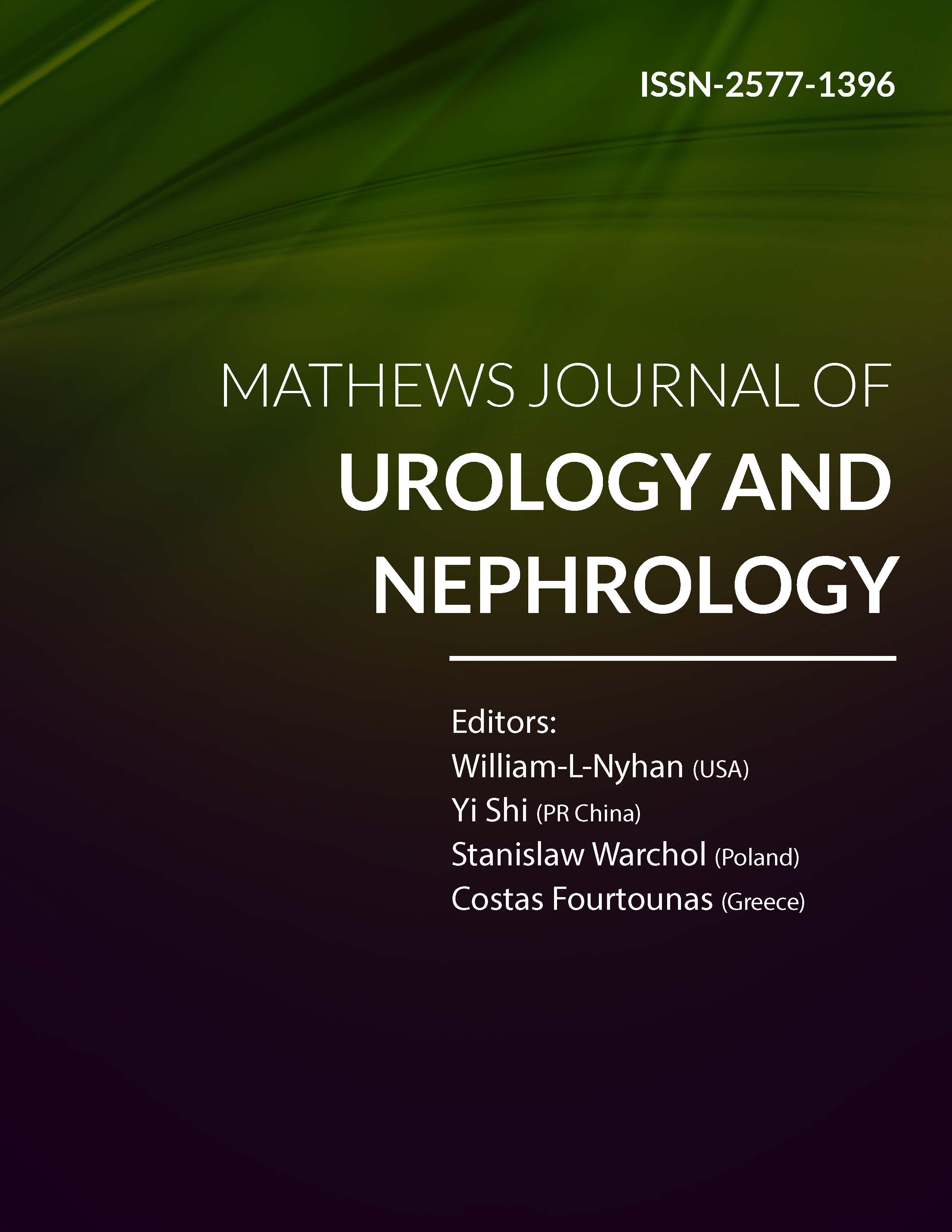
Information Links
Previous Issues Volume 6, Issue 1 - 2024
Evaluating Renal Tumors: A Comprehensive Review of Risk Factors, Clinical Presentations, and Prognostic Histology in 80 Patients
Mahmoud Alafifi*, Abderrahmane Doumer, Hamza Ait Mahanna, Reda Safwate, Adil Kbiro, Amine Moataz, Mohamed Dakir, Adil Debbagh, Rachid Aboutaieb
Department of Urology, University Hospital Center IbnRochd Casablanca and Faculty of Medicine and Pharmacy of Casablanca, Morocco
*Corresponding author: Dr. Mahmoud Alafifi, Department of Urology, University Hospital Center IbnRochd Casablanca and Faculty of Medicine and Pharmacy of Casablanca, 19 Tarik ibnou quartiers des hôpitaux, Morocco, Phone: +212700148612, E-mail: [email protected].
Received Date: March 18, 2024
Published Date: April 16, 2024
Citation: Al-Affifi M, et al. (2024). Evaluating Renal Tumors: A Comprehensive Review of Risk Factors, Clinical Presentations, and Prognostic Histology in 80 Patients. Mathews J Urol Nephrol. 6(1):17.
Copyrights: Al-Affifi M, et al. © (2024).
SUMMARY
Introduction: This study delves into the intricate histological patterns of kidney cancer, with a focus on renal cell carcinoma (RCC), which accounts for a significant portion of adult solid tumors. Diagnosis of RCC relies on clinical assessment and imaging techniques, confirmed through histopathological examination. By thoroughly analyzing histological subtypes, grading systems, and molecular features of RCC, this investigation aims to deepen our comprehension of the disease's pathological mechanisms. Such insights hold promise for refining clinical management strategies and prognostic assessments in kidney cancer care. Patients and Methods: The Urology and Andrology department at UHC Ibn Rochd conducted a descriptive study spanning from February 2018 to December 2023, focusing on patients who underwent total or partial nephrectomy for renal tumors. This retrospective analysis involved meticulous data collection, encompassing various parameters crucial for a comprehensive understanding of the patient cohort. Age, sex, clinical, and paraclinical information were recorded, offering insights into preoperative status and diagnostic workup. Anatomopathological results were meticulously documented, revealing the histopathological characteristics of excised renal tumors. Through systematic data collection and structured analysis, the study provided detailed exploration of patient demographics, clinical presentation, and histopathological features, enriching the understanding and management of renal tumors. Results and Discussion: Our study reveals a mean patient age of 62.8 years, with a male predominance (M/F ratio: 1.9), indicating an older demographic predominantly affected by renal tumors. Delays in diagnosis were evident, with an average time from symptom onset to consultation of 11 months. Smoking (51%), hypertension (27.8%), and obesity (21.2%) were identified as key risk factors, emphasizing the importance of addressing modifiable risks in renal cancer prevention. Low back pain (45%) and hematuria (27.5%) were the most common symptoms, with incidental discovery accounting for 15% of cases. Radical nephrectomy (62%) was the primary surgical approach,follwoed by partial nephrectomy (36%) with clear cell RCC (90%) being the most common histological subtype. Locally advanced disease (PT2: 48.75%) and moderate differentiation (ISUP grade II: 55%) were predominant, indicating aggressive tumor behavior. These findings provide valuable insights into renal tumor epidemiology, presentation, and histopathological characteristics, informing clinical management and prognosis assessment. Conclusion: Clear cell renal cell carcinoma (RCC) is the primary consideration in kidney cancer cases until definitively diagnosed otherwise, with a notable male predominance. Approximately half of diagnosed cases present with an intermediate prognosis, emphasizing the need for careful management and monitoring. Smoking and hypertension are key modifiable risk factors, warranting targeted intervention efforts. Routine annual check-ups can serve as pivotal opportunities for early detection and intervention. By emphasizing proactive screening and risk factor modification, healthcare providers can play a pivotal role in mitigating the burden of kidney cancer and improving long-term prognosis.
Keywords: Renal Tumours, Risk Factors, Clinical Profile, Histopronosis.